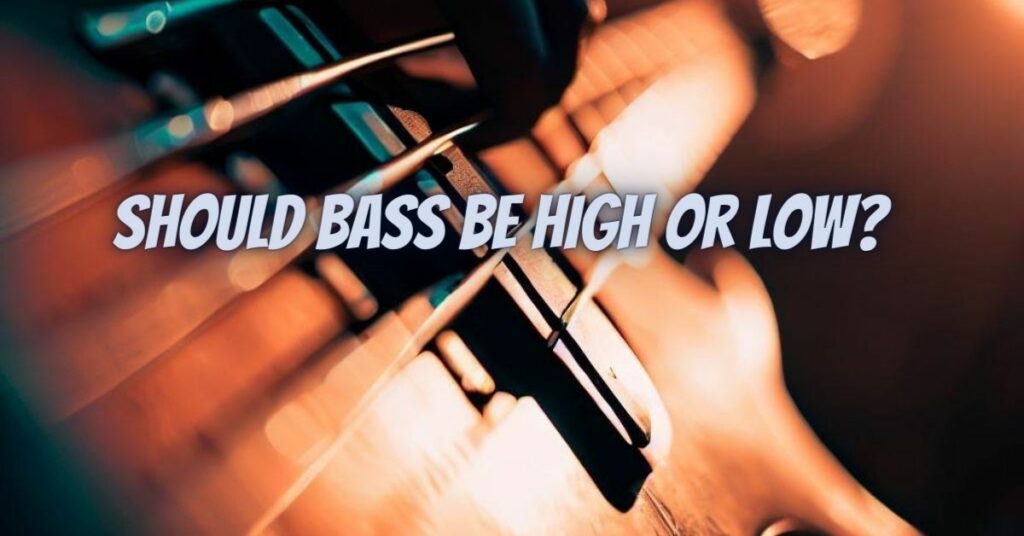Whether bass should be high or low is a complex question with no easy answer. It depends on a variety of factors, including the genre of music, the venue, the other instruments in the band, and the personal preferences of the listener.
Genres of music such as pop, rock, and metal typically use high bass frequencies. This is because high bass frequencies are bright, clear, and punchy, which can help to give the music a more energetic and exciting sound. High bass frequencies can also be used to cut through other instruments in the mix and make the bass line more audible.
Genres of music such as hip hop, electronic dance music, and reggae typically use low bass frequencies. This is because low bass frequencies are deep, warm, and boomy, which can help to give the music a more powerful and immersive sound. Low bass frequencies can also be used to create a sense of groove and rhythm.
The venue in which the music is being played can also affect the ideal bass level. In a small room, it is important to use high bass frequencies so that the bass line is more audible. In a large venue, it is important to use low bass frequencies so that the bass can fill the space.
The other instruments in the band can also affect the ideal bass level. The bass frequency should be balanced with the other instruments in the band. If the bass is too high, it may drown out the other instruments. If the bass is too low, it may not be audible.
Finally, the personal preferences of the listener also play a role in determining the ideal bass level. Some people prefer to listen to music with high bass levels, while others prefer a more balanced sound.
Here are some tips for setting the bass level:
- Start with a low level and increase it gradually until you find a level that sounds good to you.
- Listen to your music in a variety of environments to get a sense of how the bass sounds in different settings.
- Ask other people for their feedback on the bass level.
- Experiment with different bass frequencies to see what sounds best for the genre of music you are playing.
It is important to note that there is no one “correct” bass level. The best way to find the right bass level is to experiment and find what sounds good to you and your audience.
Here are some additional factors to consider when setting the bass level:
- The type of speakers you are using: Different types of speakers have different bass response characteristics. For example, subwoofers are designed to reproduce low bass frequencies, while bookshelf speakers are typically better at reproducing mid and high bass frequencies.
- The room acoustics: The acoustics of the room in which the music is being played can also affect the bass level. For example, a room with a lot of hard surfaces will tend to have more reflective acoustics, which can make the bass sound muddy. A room with a lot of soft surfaces will tend to have more absorptive acoustics, which can make the bass sound less boomy.
- The equalization (EQ) settings on your audio equipment: Most audio equipment has EQ controls that allow you to adjust the level of different frequency bands, including the bass frequencies. You can use the EQ to boost or cut the bass level to your liking.
By following these tips, you can find the ideal bass level for your music and your listening environment.


